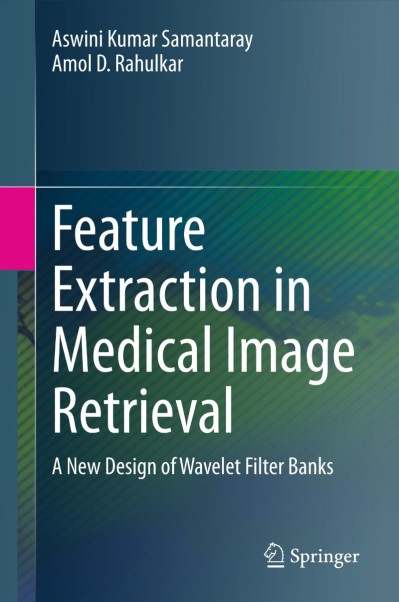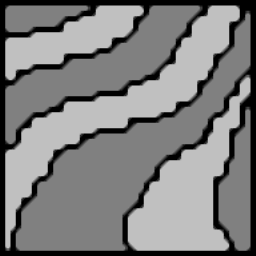Most Commented
Feature Extraction in Medical Image Retrieval: A New Design of Wavelet Filter Bank...




Description material

pdf | 9.87 MB | English | Isbn:9783031572791 | Author: Aswini Kumar Samantaray, Amol D. Rahulkar | Year: 2024
About ebook: Feature Extraction in Medical Image Retrieval: A New Design of Wavelet Filter Banks
Medical imaging is fundamental to modern healthcare, and its widespread use has resulted in creation of image databases. These repositories contain images from a diverse range of modalities, multidimensional as well as co-aligned multimodality images. These image collections offer opportunity for evidence-based diagnosis, teaching, and research. Advances in medical image analysis over last two decades shows there are now many algorithms and ideas available that allow to address medical image analysis tasks in commercial solutions with sufficient performance in terms of accuracy, reliability and speed. Content-based image retrieval (CBIR) is an image search technique that complements the conventional text-based retrieval of images by using visual features, such as color, texture, and shape, as search criteria. This book emphasizes the design of wavelet filter-banks as efficient and effective feature descriptors for medical image retrieval.
Firstly, a generalized novel design of a family of multiplier-free orthogonal wavelet filter-banks is presented. In this, the dyadic filter coefficients are obtained based on double-shifting orthogonality property with allowable deviation from original filter coefficients. Next, a low complex symmetric Daub-4 orthogonal wavelet filter-bank is presented. This is achieved by slightly altering the perfect reconstruction condition to make designed filter-bank symmetric and to obtain dyadic filter coefficients. In third contribution, the first dyadic Gabor wavelet filter-bank is presented based on slight alteration in orientation parameter without disturbing remaining Gabor wavelet parameters. In addition, a novel feature descriptor based on the design of adaptive Gabor wavelet filter-bank is presented. The use of Maximum likelihood estimation is suggested to measure the similarity between the feature vectors of heterogeneous medical images. The performance of the suggested methods is evaluated on three different publicly available databases namely NEMA, OASIS and EXACT09. The performance in terms of average retrieval precision, average retrieval recall and computational time are compared with well-known existing methods.
Firstly, a generalized novel design of a family of multiplier-free orthogonal wavelet filter-banks is presented. In this, the dyadic filter coefficients are obtained based on double-shifting orthogonality property with allowable deviation from original filter coefficients. Next, a low complex symmetric Daub-4 orthogonal wavelet filter-bank is presented. This is achieved by slightly altering the perfect reconstruction condition to make designed filter-bank symmetric and to obtain dyadic filter coefficients. In third contribution, the first dyadic Gabor wavelet filter-bank is presented based on slight alteration in orientation parameter without disturbing remaining Gabor wavelet parameters. In addition, a novel feature descriptor based on the design of adaptive Gabor wavelet filter-bank is presented. The use of Maximum likelihood estimation is suggested to measure the similarity between the feature vectors of heterogeneous medical images. The performance of the suggested methods is evaluated on three different publicly available databases namely NEMA, OASIS and EXACT09. The performance in terms of average retrieval precision, average retrieval recall and computational time are compared with well-known existing methods.
Warning! You are not allowed to view this text.
Warning! You are not allowed to view this text.
Join to our telegram Group
Information
Users of Guests are not allowed to comment this publication.
Users of Guests are not allowed to comment this publication.
Choose Site Language
Recommended news
Commented



![eM Client Pro 9.2.1735 Multilingual [Updated]](https://pikky.net/medium/wXgc.png)






![Movavi Video Editor 24.0.2.0 Multilingual [ Updated]](https://pikky.net/medium/qhrc.png)

